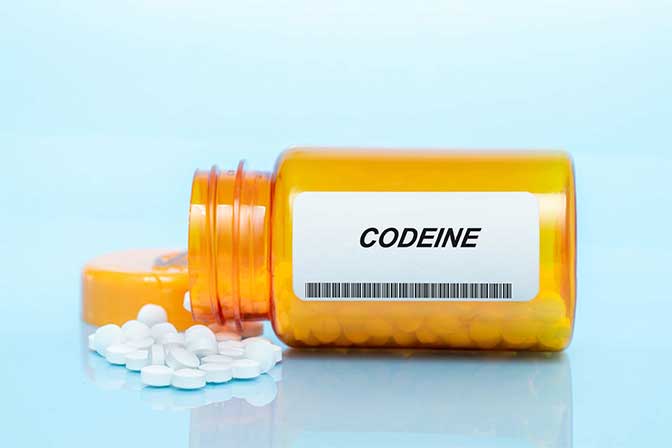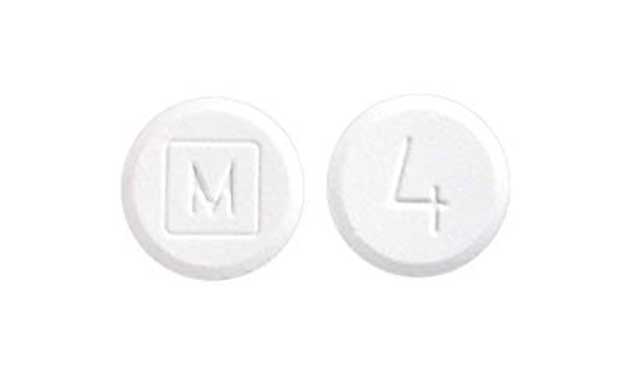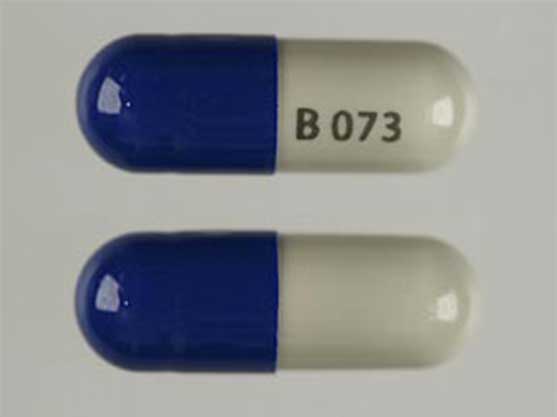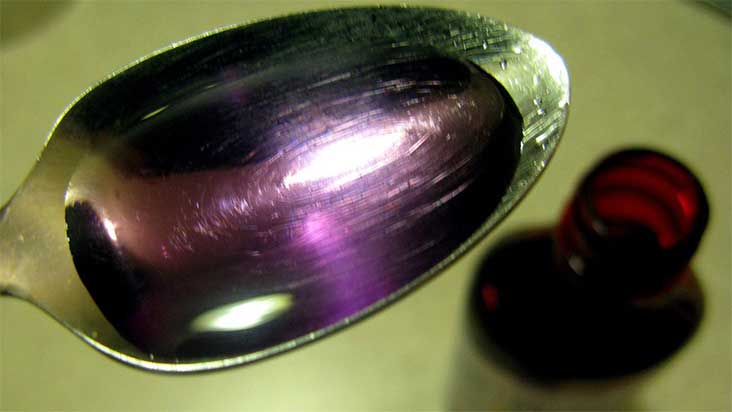What Does Codeine Look Like?
What codeine looks like depends on the formulation of the drug. Codeine tablets and capsules are white, gray, and blue, while the liquid cough syrup form may appear pink, red, and purple.

Codeine is a prescription drug considered to be a narcotic opiate painkiller. It is offered in tablet, capsule, and liquid form to alleviate severe or moderate pain.
As a tablet and capsule, codeine is white with numbers that designate the type of pill and the strength. The liquid form of codeine, however, appears in pink, red, and purple colors and is known as lean or purple drank on the street.
In addition to this, codeine is available in combination with acetaminophen (brand name Tylenol). The generic name for Tylenol with codeine is acetaminophen-codeine. When first prescribed codeine, your healthcare provider may have ibuprofen or naproxen prescribed to you as well.
What Does Codeine Look Like?
Codeine is medically offered in a number of ways but also has the potential to be abused. What codeine looks like depends on the form of the drug.
Codeine Tablet
This strong pain reliever is available as a tablet. Because it can be combined with acetaminophen, this white tablet has various pill imprints to identify the strength of the medication.

Codeine Capsule
Codeine available in capsule form will appear blue or gray in color with a white end. The pill imprint may change depending on the strength of the drug as well as the other medications combined.
The pill imprint on the capsule can also vary due to these reasons.

Codeine In Liquid Form
In liquid form, codeine is used mainly for cough syrups. Syrups are offered in a range of colors depending on the substance combined with codeine.
Over-the-counter cough syrups may come in shades of pink, red, and purple. The liquid can be quite thick, appearing lighter or darker depending on the mixture. When using the liquid form of codeine, be sure to use exact measurements for the drug.

Codeine Abuse
According to the Substance Abuse and Mental Health Services Administration (SAMHSA), codeine can occur naturally or synthesized chemically. It is commonly used in analgesic or antitussive agents.
The United States Drug Enforcement Administration (DEA) classifies codeine as a controlled substance. Depending on how the drug is prepared and the concentration of the opioid medication, codeine may fall into various controlled substance categories.
Regardless, codeine can have a high potential for abuse. Ohio residents should be aware of the side effects of taking or abusing this drug.
Side Effects Of Codeine Abuse
Despite being available in a number of forms, codeine has a range of common side effects to life-threatening health concerns.
Short-Term Side Effects
Some of the short-term side effects of codeine, according to the United States Food and Drug Administration (FDA), may include:
- sedation
- drowsiness
- constipation
- dry mouth
- nausea
- difficulty urinating
Long-Term Side Effects
Long-term effects of codeine use may include:
- vision changes
- loss of sex drive
- sleeping problems
- memory loss
- risk of addiction
The side effects of codeine can be made worse by those who have a history of blood pressure or breathing problems.
Due to the fluctuations in blood pressure and the potential for respiratory depression when the drug is abused, CNS depressants such as benzodiazepines or opioids including hydrocodone should be avoided.
Withdrawal Symptoms
Those who suddenly stop taking this pain medication may experience a number of codeine withdrawal symptoms. Quitting medication “cold turkey” is never advised. Speak with your healthcare provider to receive medical advice before abruptly stopping the drug.
If your codeine intake is suddenly stopped, you may experience withdrawal symptoms such as:
- chills
- runny nose
- sweating
- anxiety
- fast breathing
- stomach cramps
- loss of appetite
- agitation or irritability
- cravings for the drug
- restlessness
Opioid Overdose
For those who combine codeine with other substances or take the drug in high doses, you may experience a potential codeine overdose. Some of the symptoms of an overdose may consist of:
- shallow breathing
- sleepiness
- coma
- cold or clammy skin
Contact 911 immediately if you suspect that an overdose has occurred. A life-saving medication known as naloxone may be used to help reverse the effects of an opioid overdose.
For information on our inpatient substance use treatment options, please contact us today.
- Food and Drug Administration — Codeine https://www.accessdata.fda.gov/drugsatfda_docs/label/2019/020232s044lbl.pdf
- National Institute on Drug Abuse — What Are Prescription Opioids? https://nida.nih.gov/publications/drugfacts/prescription-opioids
- National Library of Medicine: MedlinePlus — Codeine https://medlineplus.gov/druginfo/meds/a682065.html
- National Library of Medicine: StatPearls — Codeine https://www.ncbi.nlm.nih.gov/books/NBK526029/

